- Revenue estimates suggest a nearly unchanged topline in the following two years.
- EBITDA can increase significantly in NTM 2023 and decelerate afterward
- The stock is relatively undervalued versus its peers
Part 1 of this article discussed Calfrac’s (CFWFF) outlook, performance, and financial condition. In this part, we will discuss more.
Linear Regression Based Revenue Forecast
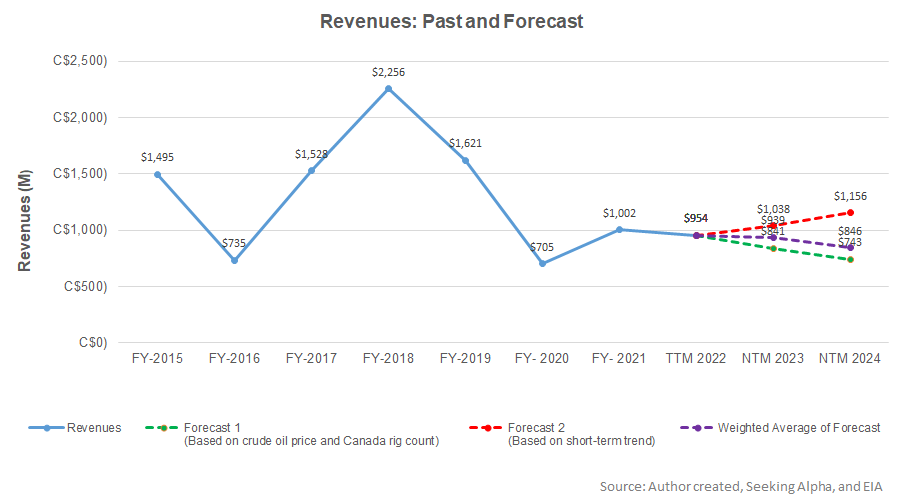
Based on a regression equation between the key industry indicators (crude oil price and Canada rig count) and Calfrac’s reported revenues for the past seven years and the previous four quarters, its revenues are unlikely to change much in the next two years.
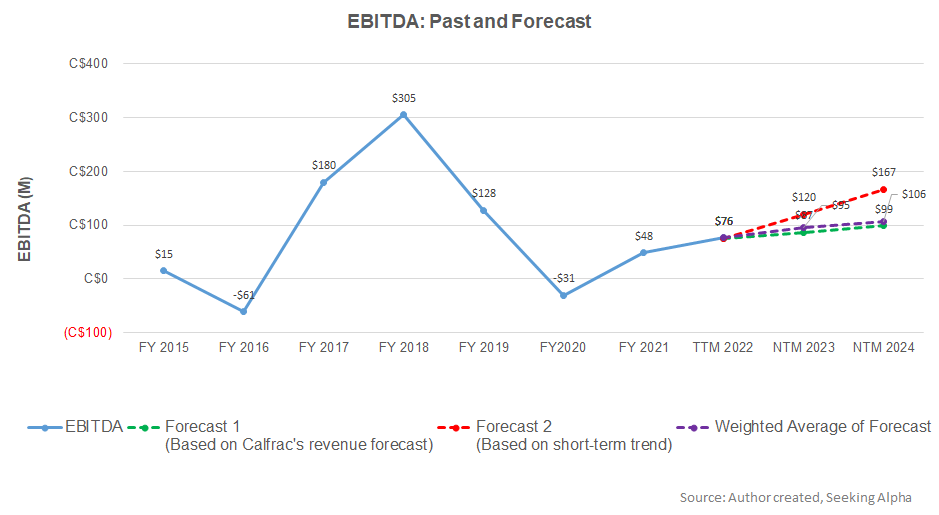
Based on the same regression models and the forecast revenues, I expect the company’s EBITDA to step up substantially in the next 12 months (or NTM) in 2023. The model suggests the EBITDA growth rate will slow down in NTM 2024.
Target Price And Relative Valuation
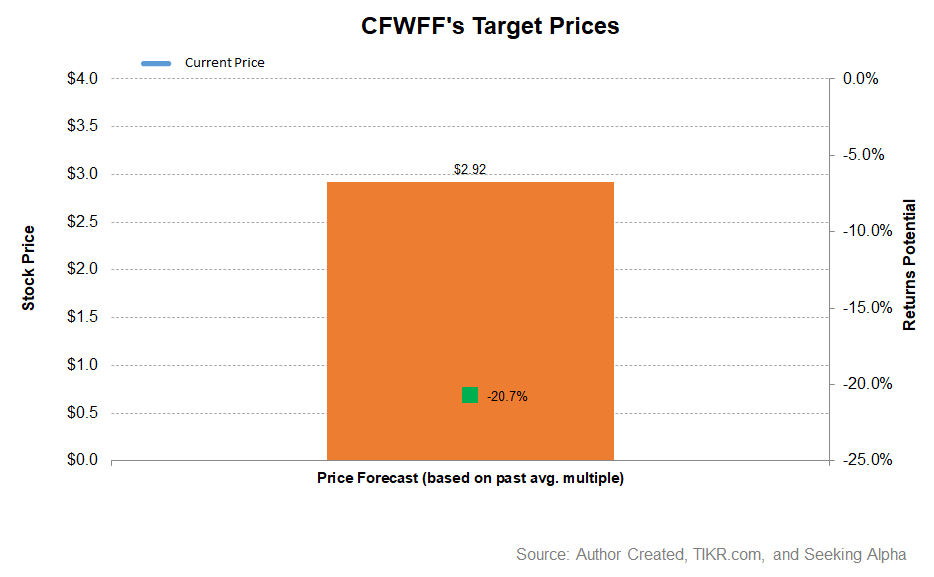
Based on revenues and EBITDA estimates derived from the model, returns potential using the past average EV/EBITDA multiple (6.0x) is negative (17% downside).
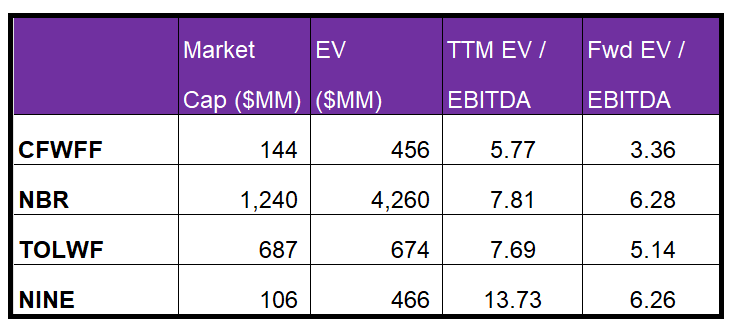
Calfrac’s forward EV-to-EBITDA multiple contraction versus the adjusted EV/EBITDA is steeper than the peers because its EBITDA is expected to increase more sharply than its peers in the next year. This should typically result in a higher EV/EBITDA multiple than its peers. However, the company’s EV/EBITDA multiple (5.8x) is lower than its peers’ (NBR, TOLWF, and NINE) average of 9.7x. The stock is relatively undervalued versus its peers.
What’s The Take On Calfrac?
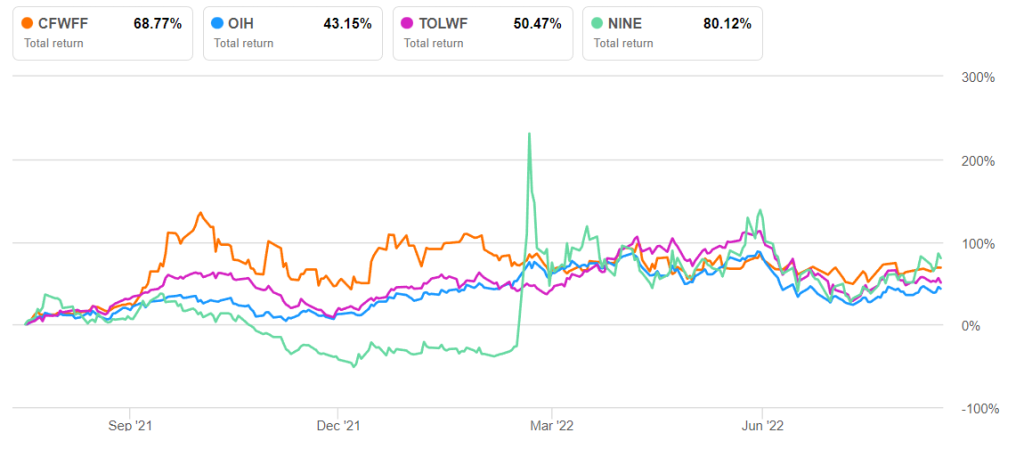
Calfrac’s outlook has remained bullish after the first half of 2022. While it is unlikely to add to its pressure pumping fleet in the US for the rest of the year, it will reap the benefits of higher utilization and a pricing recovery. Its Canada operations may see another unit joining the fleet, although the timing is uncertain. In Argentina, multi-year contracts and growth prospects in Southern Argentina can add to the positive factors. So, the stock outperformed the VanEck Vectors Oil Services ETF (OIH) in the past year.
On the other hand, the operating margin in Canada shrank in Q2. As Russia’s Ukraine invasion continues, the impact of a steep appreciation of the Russian ruble led to the fall of the CFO. So, free cash flows remained negative. Although it deleveraged in recent months, its liquidity is not robust. Relative valuation-wise, however, the stock is undervalued versus its peers. Considering everything, investors can hold the stock with the prospect of higher returns in the medium to long term.













